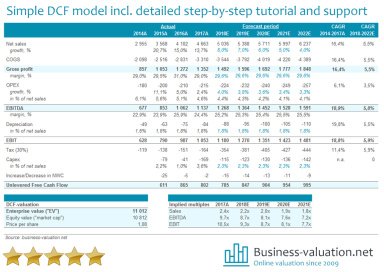
Last version published: 05/04/2018 12:30
Publication number: ELQ-10661-11
View all versions & Certificate

Discounted Cash Flow (DCF) Model
A step by step Discounted Cash Flow Analysis Tutorial (DCF model)
Further information
This DCF model can be used by CFOs, Students, Teachers, Business controllers, M&A analysts, Private Equity analysts etc. The model is easy to use, has a hiqh flexibility and gets the job done.








